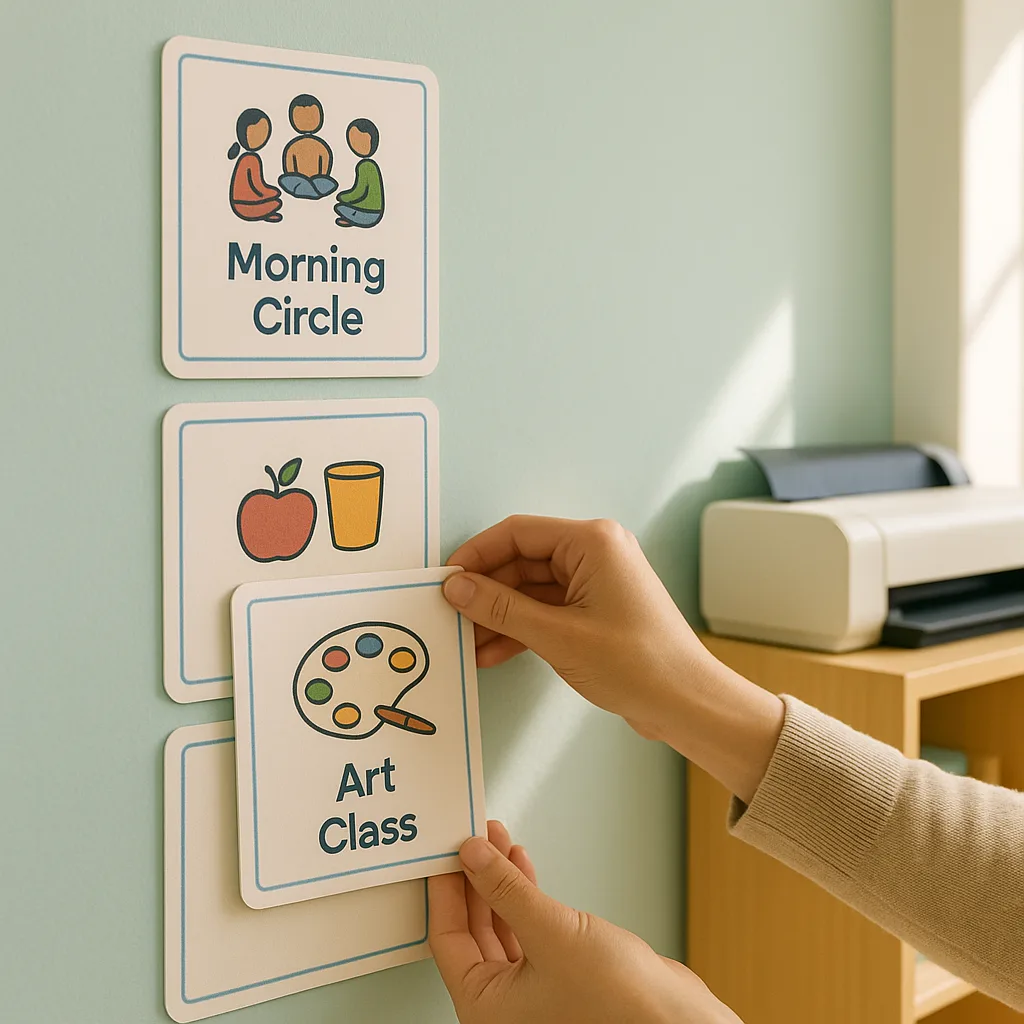Poster Maker Machines for Neurodivergent Schedules
Essential Elements of Effective Visual Schedules
Creating visual schedules that truly support neurodivergent learners requires careful attention to design principles rooted in both psychology and practical classroom experience. Let me share the essential components I’ve found most effective through years of working with diverse learners.
Symbol Selection: The foundation of any visual schedule lies in choosing appropriate symbols or images. For instance, some students respond best to photographs of actual objects and locations in their environment, while others prefer simplified icons or Picture Exchange Communication System (PECS) symbols. The key is matching the symbol type to the student’s developmental level and processing style.
Color Coding: Strategic use of color can enhance understanding and reduce processing time. Nevertheless, it’s crucial to avoid overwhelming students with too many bright colors. I recommend using a consistent color scheme where similar activities share colors – perhaps all academic tasks in blue, breaks in green, and transitions in yellow.
Layout and Flow: The arrangement of schedule elements should follow a clear, predictable pattern. Most students benefit from left-to-right or top-to-bottom progressions that mirror reading patterns. Additionally, adequate white space between items prevents visual overwhelm and helps students focus on one task at a time.
Research shows visual schedules can reduce challenging behaviors by up to 73%
Step 1: Assess Individual Needs
Begin by conducting a thorough assessment of each student’s communication level, sensory preferences, and cognitive abilities. Consider:
• Current communication methods (verbal, nonverbal, AAC devices)
• Visual processing strengths and challenges
• Attention span and need for detail
• Sensory sensitivities to colors or textures
• Previous experience with visual supports
Document these findings to guide your design choices. Remember, what works for one student may overwhelm another.
Step 2: Choose Your Format
Select the appropriate schedule format based on your assessment:
Object Schedules: For students at early developmental stages, use actual objects or miniatures attached to a board.
Photo Schedules: Ideal for students who need concrete representations but can understand that photos represent real items.
Symbol Schedules: Best for students comfortable with abstract representations who benefit from consistent, simplified imagery.
Text Schedules: Appropriate for readers who still benefit from visual structure and organization.
Maximizing Impact with Material Selection
Durability First
Sensory Appeal
Weather Resistance
The quality of your printed materials directly impacts their effectiveness and longevity. When using poster maker machines, selecting appropriate materials becomes crucial for creating schedules that withstand daily classroom use while meeting sensory needs.
I’ve found that understanding printing costs helps justify the investment in quality materials. While premium options may cost slightly more initially, they last significantly longer and provide better sensory experiences for students.
Implementation Strategies for Success
Having the most beautifully designed visual schedule means nothing if implementation falls short. Through my years of supporting neurodivergent students, I’ve learned that success lies in thoughtful introduction and consistent use.
Gradual Introduction: Start by introducing the schedule during preferred activities or calm moments. Allow students to explore the schedule without pressure, perhaps beginning with just morning routines before expanding to full-day schedules.
Consistent Language: Use the same verbal cues when referencing the schedule. Phrases like “Check your schedule” or “What comes next?” become powerful prompts that encourage independence over time.
Celebrate Success: Acknowledge when students successfully use their schedules, but keep praise calm and matter-of-fact to avoid overstimulation. A simple “You checked your schedule and found math time – nice work!” reinforces the behavior without creating anxiety.
Regular Updates: As students grow and change, so should their schedules. Having access to poster maker machines allows for quick updates when routines shift or new activities emerge. This flexibility is crucial for maintaining schedule effectiveness.
Creating Your School’s Visual Support System
Building a comprehensive visual support system requires more than individual schedules – it demands a whole-school approach to visual communication and support.
Consider establishing a visual support center in your school where teachers can access templates, symbols, and printing resources. This centralized approach ensures consistency while reducing individual teacher workload.
Template Libraries: Create a shared digital library of schedule templates for different grade levels and needs. Include options for daily schedules, subject-specific routines, and special event planning.
Symbol Banks: Maintain a comprehensive collection of symbols and images that reflect your school’s unique spaces and activities. Having school-specific images increases relevance and recognition for students.
Training Resources: Develop training materials for new staff members, ensuring everyone understands how to create and implement visual schedules effectively. Include video tutorials showing the printing process using your poster maker machines.


